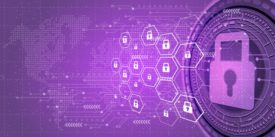Cybersecurity News
CYBER.ORG releases first national K-12 cybersecurity learning standards
The standards will help increase student cybersecurity literacy and build a robust pipeline of future cybersecurity talent
August 5, 2021
Sign-up to receive top management & result-driven techniques in the industry.
Join over 20,000+ industry leaders who receive our premium content.
SIGN UP TODAY!Copyright ©2024. All Rights Reserved BNP Media.
Design, CMS, Hosting & Web Development :: ePublishing










